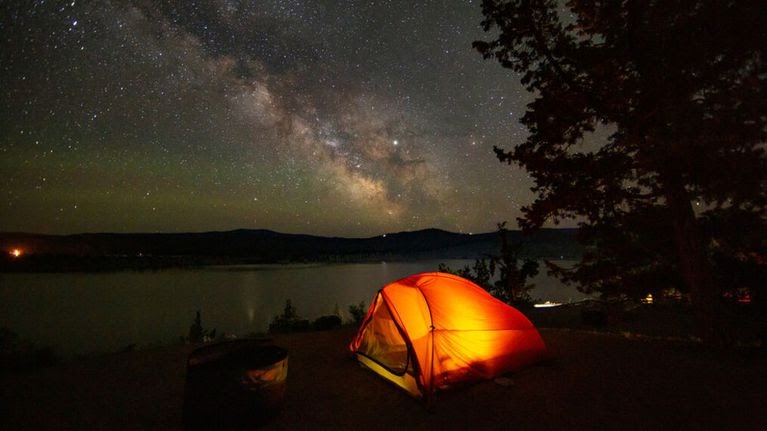Prineville Reservoir becomes first international Dark Sky Park in Oregon

Oregon Parks and Recreation Department (OPRD) and International Dark-Sky Association (IDA) are pleased to announce that Prineville Reservoir State Park is today certified as an International Dark Sky Park. This park is the newest addition to the International Dark Sky Places Program. The park is also the first Oregon park and the second place in Oregon to receive this certification.
The certification recognizes the exceptional quality of the park’s night skies. It also recognizes the park’s efforts to install responsible lighting and to educate the public about light pollution. Prineville Reservoir joins only 174 locations worldwide that have followed a rigorous application process for dark sky certification.
IDA acknowledges that artificial light at night has revolutionized the way people live and work outdoors. However, it has come at a price. Outdoor lighting can disrupt wildlife. Outdoor lighting can affect human health. It can waste money and energy. It can also contribute to climate change and block a view of the universe. Since 1988, IDA has tried to protect night skies from light pollution. Certifying areas with dark skies is one of the things the organization does.
“The problem of light pollution continues to grow,” says IDA on its website. “Light pollution is increasing worldwide at twice the rate of global population growth. Eight out of ten people live under a light-polluted night sky, at least three billion dollars is wasted on outdoor lighting each year in the U.S., and virtually every species studied has been harmed by light pollution.”
Prineville Reservoir State Park is in Central Oregon. It was selected for its expansive dark skies. To receive this certification, park staff replaced strong outdoor lights with softer yellow and red lighting. Park staff wanted to offer astronomy education at the park. Astronomy is the study of the stars and space.
“We are proud to help protect the night skies above Prineville Reservoir from light pollution and share Oregon’s incredible dark sky with visitors who may not be able to see the Milky Way from home,” says Lisa Sumpton. She is the director of the Oregon Parks and Recreation Department.
-This story was first published in ESOL News Oregon May 10, 2021.
Check
Discuss
- Why are Dark Sky Parks necessary? What are their advantages?
- Did you grow up in a big city or a small town? How dark was it at night? What could you see?
- Outdoor lighting can affect human health. How?
- Use Google to learn more about Prineville Reservoir State Park. Would you like to visit it? What can you do there? What stars would you see at night? Would you see anything interesting during the day?
Write
- The article says that outdoor lighting wastes money and energy. How big is this problem? Describe its impact on the economy.
- Do some research about the issue of light pollution. Describe the problem. Then discuss some possible solutions.
- Outdoor lighting can disrupt wildlife. How? Give some examples.
- Why is astronomy education important? What can we learn about the universe?
Sources
Hale, J. (2021, May 7). Prineville Reservoir certified as Oregon’s first “Dark Sky Park.” Oregonlive. https://www.oregonlive.com/travel/2021/05/prineville-reservoir-certified-as-oregons-first-dark-sky-park.html
Prineville Reservoir State Park -Oregon State Parks. (n.d.). Stateparks.oregon.gov. Retrieved May 8, 2021, from https://stateparks.oregon.gov/index.cfm?do=park.profile&parkId=26
Prineville Reservoir State Park Becomes First International Dark Sky Park in Oregon. (2021, May 7). International Dark-Sky Association. https://www.darksky.org/prineville-reservoir-state-park-announcement/
Photo by Dawn Davis, Oregon State Parks

